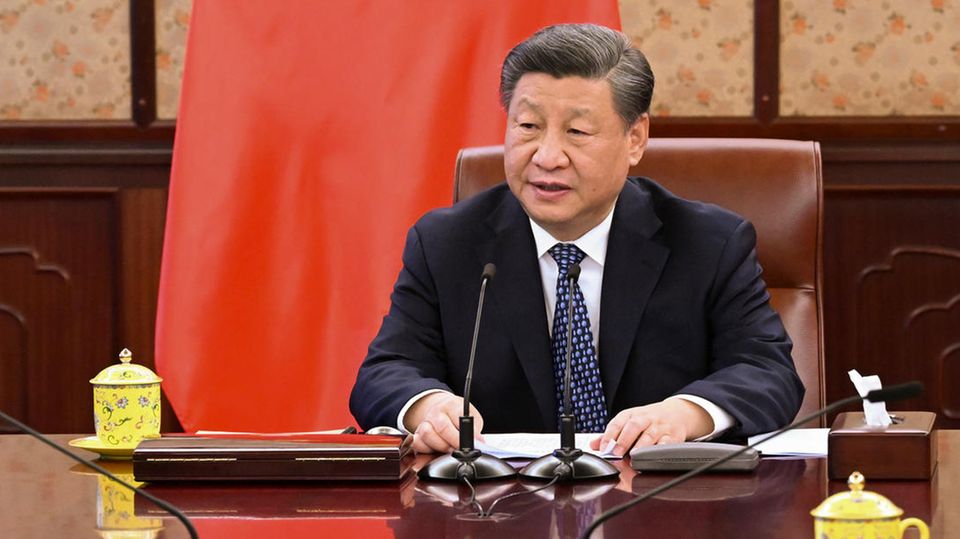After quarrels
China and the USA resume communication – Head of State Jinping receives US Secretary of State Blinken
Chinese President Jinping receives US Secretary of State Antony Blinken
© eah MILLIS / POOL / AFP
After months of disputes, the US and China are trying to mend their troubled relations. US Secretary of State Blinken is visiting Beijing, where he will receive President Xi Jinping.
In the tensions between the US and China, both sides are talking directly to each other again for the first time. On the second day of his visit to China, US Secretary of State Antony Blinken also met with Chinese top foreign policy leader Wang Yi in Beijing on Monday. In China’s power hierarchy, the top politician is above Foreign Minister Qin Gang. The first visit by a US Secretary of State to China since 2018 comes amid deep differences and ongoing disputes between the rival powers, with Beijing also having severed channels of communication.
Head of state and party leader Xi Jinping has also agreed to receive the US Secretary of State in Beijing on Monday. The Chinese state news agency Xinhua reported shortly before the planned date. The unexpectedly announced meeting is unusual in terms of protocol. It can be understood as a special gesture towards the USA.
US Secretary of State catches up on China trip
According to US reports, Blinken spoke to his counterpart for seven and a half hours on Sunday – much longer than planned. The US Secretary of State also invited Qin Gang to pay a return visit to Washington. Both sides described the talks in official statements that followed as frank, in-depth and constructive. However, the Chinese foreign minister saw the mutual relationship “at its lowest point” since diplomatic relations were established in 1979.
Blinken is making up for a trip that was originally supposed to take place in February – but was then canceled at short notice due to allegations of espionage against China about the balloon affair.
According to the US State Department, Blinken addressed a number of conflicting issues, as well as areas where China and the United States could work together. In the conversation with Qin Gang, he reiterated that the United States was pursuing a vision of a world “that is free and open and that upholds the order based on international rules.” His counterpart said China wants “stable, predictable and constructive” relations and hopes the US will “work in the same direction”.
The Chinese side is said to have repeatedly refused talks
In the heightened tensions since last summer, the Chinese side had repeatedly refused to talk via the existing communication channels, as a US diplomat described. “We tried several times to get in touch, but nobody answered the phone in Beijing,” said the diplomat. He cited events such as China’s major maneuvers in response to then-US House Speaker Nancy Pelosi’s visit to Taiwan in August, as well as other incidents between the two sides’ armed forces in the Taiwan Strait or the South China Sea.
Earlier this month, Chinese Defense Minister Li Shangfu also refused to meet his US counterpart Lloyd Austin on the sidelines of the Asian Shangri-La security dialogue in Singapore. Despite his own refusal to talk in recent months, the Chinese foreign minister in the meeting with Blinken urged the US side to work with China “to deal with unexpected and sporadic incidents in a calm, professional and rational manner.”
Sometimes enemy, sometimes friend
Russia and China – Stations of an uncanny friendship
At the same time, Qin Gang made “clear demands on the Taiwan question”: The United States should adhere to the “One China principle”, honor its commitments and not support the independence forces in Taiwan. One China policy means that Beijing is seen as China’s only legitimate government. China regards democratic Taiwan as part of the People’s Republic and threatens to conquer it. In Taipei, however, an independent government has been in power for more than seven decades, which today no longer claims to want to represent all of China.


